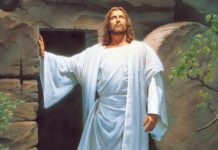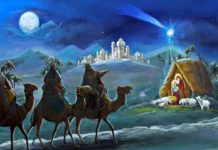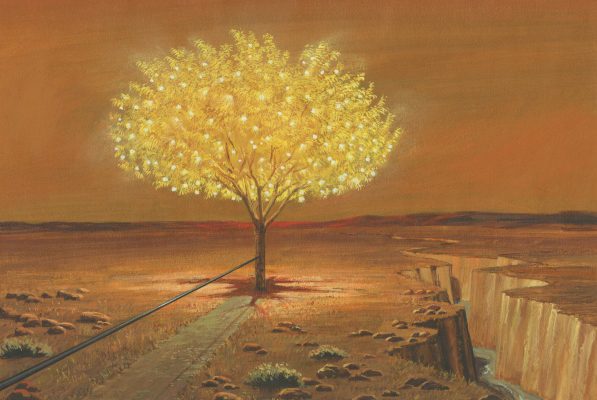
The ancient prophet Lehi’s vision of the tree of life in the Book of Mormon is richly symbolic of the Savior, Jesus Christ. Elder David A. Bednar, of the Quorum of the Twelve Apostles, said:
The central feature in Lehi’s dream is the tree of life—a representation of “the love of God” (see
1 Nephi 11:21–22). … Chapter 11 of 1 Nephi presents a detailed description of the tree of life as a symbol for the life, ministry, and sacrifice of the Savior—“the condescension of God” (1 Nephi 11:16).
Interestingly, the prophet Joseph Smith’s father had a similar dream in 1811—nearly two decades before the Book of Mormon was first published. This has led to some speculation that rather than translating the text from ancient plates, Joseph Smith wrote the Book of Mormon himself and used his father’s dream as the inspiration for Lehi’s vision. Could this be true?
There are several possible explanations for this: First, that Joseph Smith patterned Lehi’s vision of the tree of life after his father’s dream—and might have even used his father as the inspiration for Lehi. In other words, that the Book of Mormon was merely a figment of Joseph Jr.’s imagination. Second, that Joseph Smith’s mother, who wrote down the account of Joseph Smith, Sr.’s dream, misremembered it. And third, that the similarities between the two men and their visions/dreams are really just coincidental. The question then becomes, what does the evidence say?
Joseph’s Father and Lehi: Two ‘Visionary Men’
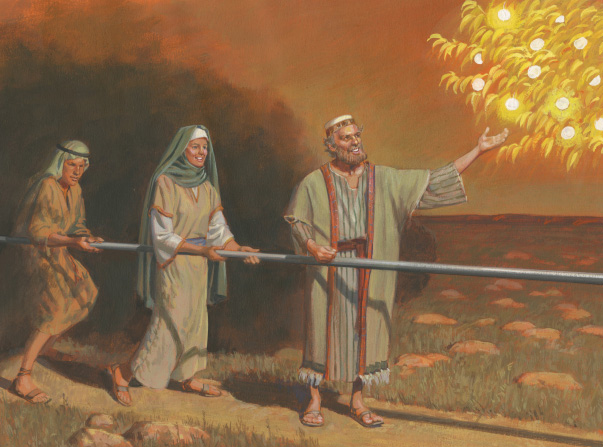
Joseph Smith, Sr., had prophetic visions and dreams, as did the ancient prophet Lehi. Lehi tells his wife:
I know that I am a visionary man; for if I had not seen the things of God in a vision I should not have known the goodness of God. (1 Nephi 5:4).
The late A. Gary Anderson, who taught at Brigham Young University, wrote:
Like his father, Joseph, Sr., was a religious man, but remained aloof from conventional religion. From 1811 to 1819 he had seven dreams that reflected his yearnings for redemption….
Richard Lloyd Anderson, an emeritus professor of Church History and Doctrine at Brigham Young University, wrote of Joseph Smith, Sr.:
There is no doubt that his family had the gift of spirituality. … His wife related his final dream before the organization of the Church. A messenger came to him and said, “I … have always found you strictly honest in all your dealings. Your measures are always heaped … [T]here is but one thing which you lack in order to secure your salvation.” And Joseph, Sr., passionately sought this information in the dream. The messenger agreed to write it down. But suddenly the dream closed. And that was just before the Prophet received his visions, as Lucy Smith related the sequence. As we have seen, Joseph Smith, Sr., looked back to this period to say that “the Lord has often visited me in visions and in dreams.”
Similar Dreams of the Tree of Life

Not only did both Joseph, Sr., and Lehi have dreams, it appears that they each had a very similar one. Lehi’s dream is found in 1 Nephi 8. Lucy Mack Smith, the wife of Joseph Smith, Sr., and mother of the prophet Joseph, recorded her husband’s dream in her manuscript Joseph Smith, the Prophet and His Progenitors for Many Generations. According to this manuscript, Joseph Sr. had two similar dreams, the second more detailed than the first. The second dream occurred in 1811 when the family was living in Lebanon, N.H., and the future prophet would have been 5 years old. To read her recollection of her husband’s dream, Click here.
There are some striking similarities between Joseph, Sr.’s dream and Lehi’s vision, which opens the possibility for the first interpretation.
Did Joseph’s Mother Remember Wrong?
The second possible explanation is that Lucy Mack Smith, who is the source for her husband’s dream, misremembered it. Lucy Mack Smith dictated the details of her husband’s dream to her scribe, Martha Jane Coray, in the winter of 1844-45— nearly 15 years after the Book of Mormon was published and 33 years after her husband had the dream. C. Wilfred Griggs, professor of ancient scripture at BYU, wrote:
There is no evidence that Lucy Mack Smith committed her material to writing before 1845, and because the Book of Mormon was written in 1829, some question exists regarding the influence of the Book of Mormon phrasing on her work. According to Lucy’s chronology, the particular dream of her husband which is used by the above critics in their comparison occurred in 1811, some eighteen years before the Book of Mormon was written in English and thirty-four years before Lucy’s work was written. The complex nature of possible influences in narrating a dream experience over so lengthy a period of time is beyond any certain reconstruction.
Mormon scholar Michael R. Ash explains:
…Lucy’s account is not only secondhand—we don’t have Joseph Sr.’s recollection of his dream—but late, which suggests that her recollection was strongly influenced by what she read in the Book of Mormon. In effect, Lehi’s vision may have influenced Lucy’s recollection of her husband’s dream.
But here, the evidence is circumstantial at best. It is a secondhand account written down decades after the event. Although the evidence is compelling, it is not enough to make a decision one way or the other.
Just a Coincidence?
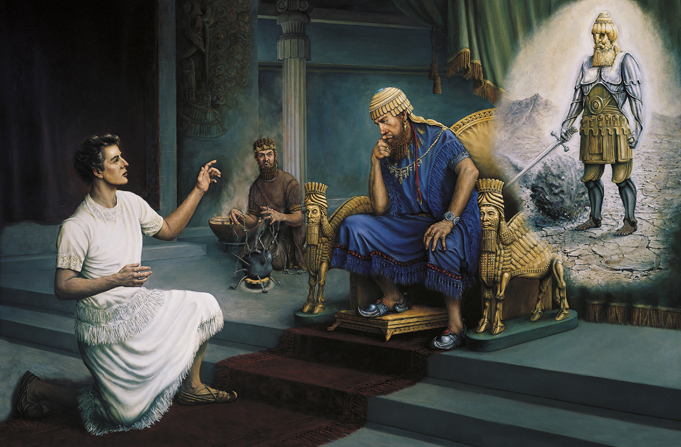
The third possible explanation is that the similarities are merely coincidences. Here, also, the evidence is circumstantial. Is it possible for two people to have similar dreams? The Church of Jesus Christ teaches that dreams are “one way that God reveals his will to men and women on earth. Not all dreams are revelations, however. Inspired dreams are the fruit of faith.”
Not only is it common for two people to have the same or similar dreams—including Daniel and King Nebuchadnezzar in Daniel 2—but there is more than one record similar to that of Lehi’s vision of the tree of life. The first one is Nephi, Lehi’s son. Nephi believed his father and asked God to show him what his father saw. So the Lord showed Nephi the same vision of the tree of life. (See 1 Nephi 11.)
But there are others found in ancient writings. LDS Scholar John Welch tells of a Christian writing titled “The Narrative of Zosimus,” which dates to the time of Christ or earlier. Originally written in Hebrew, the first modern appearance of this ancient writing was a Russian translation from an Old Church Slavonic text dating back to the 1870s—40 years after the Book of Mormon was first published.
According to LDS Scholar Michael Ash, Welch’s findings are notable. Welch found that the “Narrative of Zosimus” includes:
- A righteous family led away by God before the destruction of Jerusalem.
- A land of blessedness.
- Records on metal plates so soft that they could be inscribed using fingernails.
- Mists of darkness.
- An ocean crossing.
- A tree with pure fruit.
- Fountain of living waters.
- Being greeted by an escort.
- A vision of the Son of God.
Welch explained:
A few parallels might be counted as lucky guesses, but such numerous parallels suggest some sort of connection between the Book of Mormon and the world from which it claims to have derived.
But that is not the end of the similarities in ancient writings. Ash continues:
We now know … of similar motifs— dating to the fifth through third century B.C.— from Italy, Sicily, Crete and Macedonia which depict the dead wandering through a world of darkness in search of a white cypress tree. Non-Mormon commentators agree that the cypress tree represents the tree of life and that this mythology most likely originated in Egypt.
The motifs are similar, but the differences are significant. The late Mormon scholar Hugh Nibley wrote:
In his dreams Lehi finds himself wandering “in a dark and dreary waste,” a “dark and dreary wilderness,” where he must travel “for the space of many hours in darkness,” lost and helpless (1 Nephi 8:4—8). … It is interesting that Joseph Smith, Sr., had almost the same dream, according to his wife, who took comfort in comparing the wanderings of her own family with those of “Father Lehi.” But what is significant is not the resemblance of the two dreams but the totally different settings of the two; when the prophet’s father dreamed himself lost in “this field [of] the world,” he “could see nothing save dead, fallen timber,” a picture which of course faithfully recalls his own frontier background.
Old World Themes— Additional Evidence
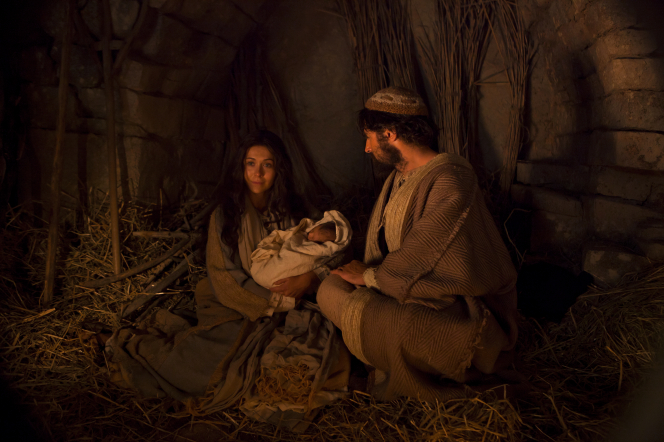
Another possible source of evidence are the Old World themes in Lehi’s vision, which contains Old World themes that cannot be overlooked—including the tree, the fruit and even the iron rod.
British scholar Margaret Barker, who is a Methodist preacher and president of the Society for Old Testament Study, explains the significance of the iron rod. Typically, she notes, biblical rods represent rulership, but a more accurate symbol would be a shepherd’s rod as a symbol for guidance. She said:
Lehi’s vision has the iron rod guiding people to the great tree. [This is] the older and probably the original understanding of the word (rod).
Barker also explains that in ancient traditions, the purpose of the tree of life is to make one happy and the fruit is described as “beautiful, fiery” and much “like white grapes.” She wrote:
Imagine my surprise when I read the account of Lehi’s vision of the tree whose white fruit made one happy.
But the most common Old World theme is the tree of life itself. Griggs wrote:
The Book of Mormon brought the tree of life to our attention long before modern scholarship revealed how common the tree was in ancient history. The symbol of that tree pervades the art and literature of every Mediterranean culture from centuries before the time of Lehi until well after the time of Moroni. This fact, and the fact that Lehi and Nephi portrayed the spiritual meaning of that symbol much the same way other ancient cultures portrayed it, demonstrates that the Book of Mormon is an ancient text, not an invention of the 19th-century social milieu.
Mormon scholar Daniel Peterson also found interesting parallels between Lehi’s vision of the tree of life and Old World traditions. Citing Peterson’s research, Ash wrote:
Despite most people’s perception of the ancient Israelites, modern scholars recognize that the Israelites were not typically monotheistic (they didn’t believe in a single God). For many years under the reign of the judges, many Israelites worshipped a female virgin deity— a consort to God— by the name of Asherah. …
So popular and important was Asherah during Israelite history that “an image or symbol of Asherah stood in Solomon’s temple at Jerusalem for nearly two-thirds of its existence.” The image had a female body from the waist up and a single column from the waist down. The top half represented her maternal nurturing powers; the single column represented a tree trunk. Asherah was not only associated with the sacred tree of life but was, in fact, considered to be the tree of life.
The Israelites were still worshipping Asherah while Lehi and his family lived in Jerusalem. It wasn’t until sometime after they left that the practice ceased. Thus, Lehi and Nephi would assuredly have been familiar with this deity.
Peterson found similar symbolism in the Menorah. Ash wrote:
Likewise, the Menorah— the seven-branch candle that stood for centuries in the Jerusalem temple— is said to represent a stylized almond tree that, at certain points in its life cycle, was radiantly white. The Greek word almond likely derives from a Hebrew term that means “Great Mother.”
Further proof of this is found as one reads between the lines of the Book of Mormon. Nephi’s vision of the tree of life was similar to his father’s. In Nephi’s vision, he is also guided by a spirit, or angel, who asks to know what Nephi desires. Nephi responds that he desires to know the interpretation of the dream. The angel responds by showing him the virgin Mary and then the baby Jesus (1 Nephi 11:14-18). Yet when the angel asks if Nephi knows that this means, Nephi answers: “Yea, it is the love of God … wherefore, it is the most desirable above all things” (verse 22).
Ash continues:
What young adult in Jacksonian America— or modern America for that matter— would make a connection between a sacred tree, the Virgin Mary and God’s love? In Nephi and Lehi’s day, however, the connection would have been obvious, and obviously colored by their cultural background. Mary was a perfect mortal typification of Asherah— she was a virgin, fair (“white”), and the mother of the most joyous thing in the world.
While Mary is not Asherah, it’s easy to see how Nephi’s culture would have prepared him to understand such an interpretation. … Methodist scholar Margaret Barker observed that both Nephi’s vision and ancient Near Eastern traditions symbolized the tree as the Heavenly Mother. “This revelation to Joseph Smith,” she said, was the ancient Mother symbolism, “intact, and almost certainly as it was known in 600 BCE.”
What is the Verdict?
Taken as a whole, what does the evidence say? Speaking of works that seek to discredit the Book of Mormon based on the parallels of both Lehi’s and Joseph Sr.’s dreams, such as Hal Hougey’s The Truth About the “Lehi Tree-of-Life” Stone, Griggs wrote:
The major weakness of works such as those mentioned above is their one-dimensional approach to the problems which the Book of Mormon presents to its critics. The assumption that any parallels from the world of Joseph Smith, real or imagined, are sufficient to discredit the authenticity of the work is naive. The challenge of the Book of Mormon lies elsewhere. It claims to be an ancient book, and it must be examined and criticized in terms of its claim.
From its imagery to its Old World themes, the Book of Mormon itself provides the greatest evidence for its authenticity as an ancient text. And when we examine the entirety of the evidence, the proof is overwhelming.
What Did Joseph Sr. See?
The following is Lucy Mack Smith’s recollection of her husband’s dream:
I thought…I was traveling in an open, desolate field, which appeared to be very barren. As I was thus traveling, the thought suddenly came into my mind that I had better stop and reflect upon what I was doing, before I went any further. So I asked myself, “What motive can I have in traveling here, and what place can this be?” My guide, who was by my side, as before, said, “This is the desolate world; but travel on.” The road was so broad and barren that I wondered why I should travel in it; for, said I to myself, “Broad is the road, and wide is the gate that leads to death, and many there be that walk therein; but narrow is the way, and straight is the gate that leads to everlasting’ life, and few there be that go in thereat.”
Traveling a short distance farther, I came to a narrow path. This path I entered, and, when I had traveled a little way in it, I beheld a beautiful stream of water, which ran from the east to the west. Of this stream I could see neither the source nor yet the termination; but as far as my eyes could extend I could see a rope running along the bank of it, about as high as a man could reach, and beyond me was a low, but very pleasant valley, in which stood a tree such as I had never seen before. It was exceedingly handsome, insomuch that I looked upon it with wonder and admiration. Its beautiful branches spread themselves somewhat like an umbrella, and it bore a kind of fruit, in shape much like a chestnut bur, and as white as snow, or, if possible whiter. I gazed upon the same with considerable interest, and as I was doing so the burs or shells commenced opening and shedding their particles, or the fruit which they contained, which was of dazzling whiteness. I drew near and began to eat of it, and I found it delicious beyond description. As I was eating, I said in my heart, “I can not eat this alone, I must bring my wife and children, that they may partake with me.” Accordingly, I went and brought my family, which consisted of a wife and seven children, and we all commenced eating, and praising God for this blessing. We were exceedingly happy, insomuch that our joy could not easily be expressed.
While thus engaged, I beheld a spacious building standing opposite the valley which we were in, and it appeared to reach to the very heavens. It was full of doors and windows, and they were filled with people, who were very finely dressed. When these people observed us in the low valley, under the tree, they pointed the finger of scorn at us, and treated us with all manner of disrespect and contempt. But their contumely we utterly disregarded.
I presently turned to my guide, and inquired of him the meaning of the fruit that was so delicious. He told me it was the pure love of God, shed abroad in the hearts of all those who love him, and keep his commandments. He then commanded me to go and bring the rest of my children. I told him that we were all there. “No,” he replied, “look yonder, you have two more, and you must bring them also.” Upon raising my eyes, I saw two small children, standing some distance off. I immediately went to them, and brought them to the tree; upon which they commenced eating with the rest, and we all rejoiced together. The more we ate, the more we seemed to desire, until we even got down upon our knees, and scooped it up, eating it by double handfuls.
After feasting in this manner a short time, I asked my guide what was the meaning of the spacious building which I saw. He replied, “It is Babylon, it is Babylon, and it must fall. The people in the doors and windows are the inhabitants thereof, who scorn and despise the Saints of God because of their humility.”
I soon awoke, clapping my hands together for joy.


